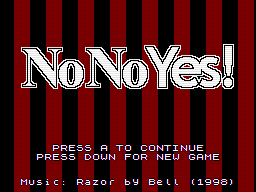NoNoYes!
Puzzle, © KesieV 2017

According to Wikipedia, puzzles are split in genres and made to test a number of player's skills, from its ingenuity to its knowledge and logic. They are created and solved just for entertainment or to face serious mathematical or logistical problem - and solving them leads from just fun to crucial solutions for research.
Videogames, similiarly, comes in a variety of genres - each one testing a different player' s skill. While most of them are just for entertainment, there are a lot of valid entries in education and even in scientific research.
The most popular puzzle game, Jigsaw puzzle, was born in 1760 by John Spilsbury, an engraver cartographer who simply mounted a map on a sheet of wood, sawed it around the outline and used the resulting pieces for teaching geography. Jigsaw puzzles had been used as we know only 60 years later.
Videogame shares the same educational past: they mostly came from artificial intelligence simulations made by the academic computer scientists in early 1950s. They started invading users home as entertainment just 20 years later, with the Magnavox Odyssey.
Nonograms is a particular type of pen and paper puzzle, in which cells in a grid must be colored or left blank according to numbers at the side of the grid to reveal a hidden picture. It was invented in 1987 by the graphics editor Non Ishida, who got inspiration from a competition in Tokyo in which a picture had to be created by having lights on or off in a skycraper. The same puzzle type was accidentally invented at the same time by Tetsuya Nishio, who published these puzzles in a different magazine. In 1989 Non Ishida exported his puzzle game to the west, presenting it to James Dalgety, who persuaded Britain's largest quality national newspaper The Telegraph to start publishing the puzzles weekly in The Sunday Telegraph.
Role Play Game videogames has been invented in west and east simultaneously, eventually helping and influencing each other and increasing the spread of the genre.
When things get too serious we love to turn them into entertainment. Vice versa, when entertainment gets too funny we like to treat it very seriously, splitting it in categories and working effortlessy on exchanging improvements and spreading it. That's something we can't control: it spontaneously happens, even in the same way in different places or with different people. Why? Stress management? Time optimization? Just incidental creativity?
Well. Probably taking problems less seriously is as constructive as taking entertainment more seriously.
Plot!
Now that you know how nonograms works, you can solve a bunch of them on your computer!
Use UP/DOWN/LEFT/RIGHT for moving the cursor, hit the A BUTTON for toggling a filled space and hit the B BUTTON for marking a blank space. Puzzle is completed once all the correct spaces are filled. Good luck!
(Want to share something? You can find me on Twitter!)
 Install / Add to home
Install / Add to home
 View game sources
...or play it online below!
View game sources
...or play it online below!